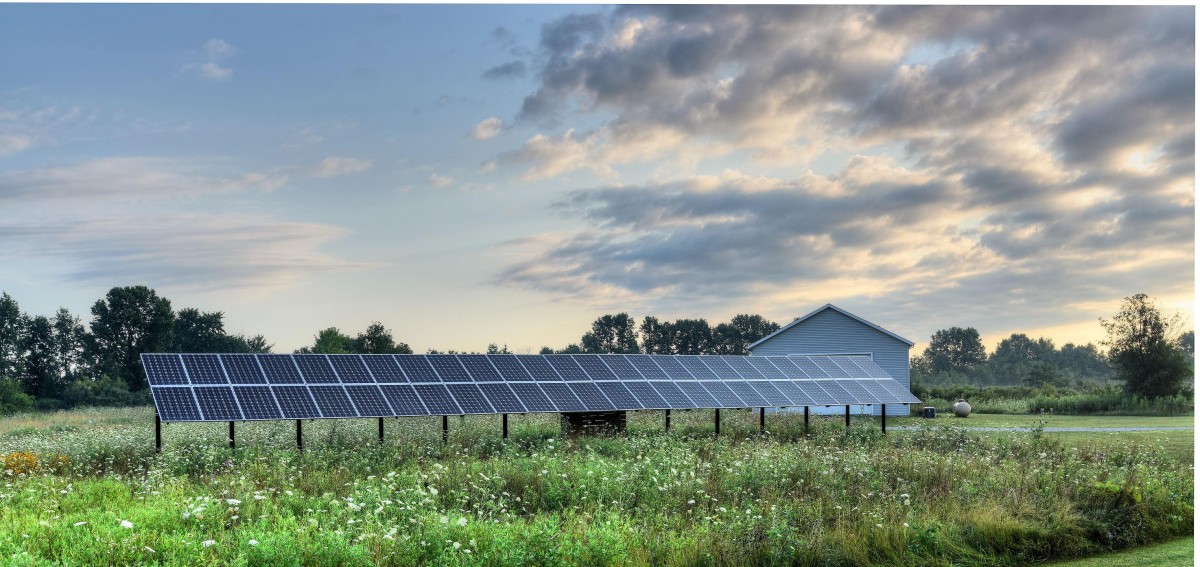April 23, 2016
By Elizabeth Penney
Harnessing the sun’s power is once again at the forefront of energy technology as an increasingly affordable method of generating electricity. In developing regions of the world, solar is not only a clean energy solution but sometimes the sole source of power for smallholders. In response, Powering Agriculture, a program administered by United States Agency for International Development (USAID) on behalf of the PAEGC partners, is supporting innovative solar products for use on farms. Powering Agriculture partners include USAID, the governments of Sweden and Germany, Duke Energy, and Overseas Private Investment Corporation (OPIC).
“Our goal is to help farmers access clean, reliable energy,” says Dr. Ryan Shelby, senior energy engineering advisor and program manager for the initiative. Although Powering Agriculture is exploring multiple technologies, including wind, biogas, and biomass, Shelby is passionate about the ability of solar energy to transform agriculture. He recalls days, even weeks, when his family’s 126-acre Alabama farm lost power due to storms. At that time, the cost of solar panels was a major barrier to installation. The availability of dependable and low-cost electricity in the U.S. is another reason many American farmers haven’t invested in solar, Shelby believes.
In contrast, farmers in developing countries either don’t have access to electricity in the field or power is unreliable and inadequate. In some areas of Africa, for example, only 5% of the population can connect to grid electricity. The solutions created under Powering Agriculture’s oversight are inexpensive, since small farms with limited financial resources are the target market. In addition, increasing crop revenues and alleviating poverty are critical outcomes.
Lack of access to technical support is another area of concern. “We’re looking for technology that can be easily repaired as well as quickly scaled,” Shelby says.
In particular, solar pumping and irrigation applications are helping African farmers—many of them women—increase productivity by reducing a grueling workload and extending the growing season. According to the Food and Agriculture Organization, irrigation can increase crop yields by 100-400%. In sub-Saharan Africa, only 4% of cropland is irrigated, meaning possible productivity gains are enormous. Several projects show great potential impact for this region.
In Senegal, hand watering and use of high-cost diesel pumps are being replaced by 4.8-6.8kW mini-solar arrays powering AC pumps. Developed by Columbia University’s Earth Institute, each unit costs about $600 U.S. dollars, projected to drop to $200 after further development. A single array can serve up to seven farmers, but Shelby says the panels can be bolted together to serve a larger area.
Farmers use prepaid cards issued through a micro-utility to access the service, with small payments for equipment loans added on. Unlike many solar systems, battery storage is not required. Three systems are in place now, with a goal of reaching 2,000 additional farmers over the next few years.
In Kenya, KickStart International is rolling out a solar-powered irrigation pump that is also portable. With a mission to lift people out of poverty, the organization has focused on developing various types of pumps, many of them manual. The solar-powered pump is foldable and can be carried in a backpack. Right now they cost about $800 in U.S. dollars; the goal is to reduce the price to $120. Farmers will use a pay-as-you-go system charged by the hour.
“Powering Agriculture is providing funds for design work and the business model,” Shelby says. “This is a high impact product.” KickStart plans to sell about 90,000 solar pumps in 16 countries over the next six years.
Another project Shelby is excited about combines solar pumping with drip irrigation. Designed by Nairobi-based SunCulture, the AgroSolar Irrigation Kit pumps water via solar power into a holding tank. The water is then released through a gravity system. The company claims crop increases of 300% and water savings of 80%, plus investment payback in one growing season. Presently, 500 Kenyan farmers are using the system.
Powering Agriculture awards grants ranging from $500,000 to $2,000,000 to promising concepts for design, piloting, and deployment. One main goal is to identify technologies that can be brought to commercial scale and integrated into regional or national agriculture production. Next-stage financing support is provided through the Powering Agriculture Accelerator program (PAX), which provides access to debt and equity financing as well as further grants. Funders to date include Finnfund, Deutsche Bank, Global Environmental Fund, and the Africa Agriculture and Trade Investment Fund (AATIF).
The program’s combination of innovative alternative energy solutions combined with low acquisition and operating costs could potentially result in global demand, including in developed countries where farmers are seeking affordable alternative energy technology. “These innovations are resulting in better energy and water management,” Shelby says, “providing opportunities for agricultural systems to become climate smart.”

Let GAI News inform your engagement in the agriculture sector.
GAI News provides crucial and timely news and insight to help you stay ahead of critical agricultural trends through free delivery of two weekly newsletters, Ag Investing Weekly and AgTech Intel.






